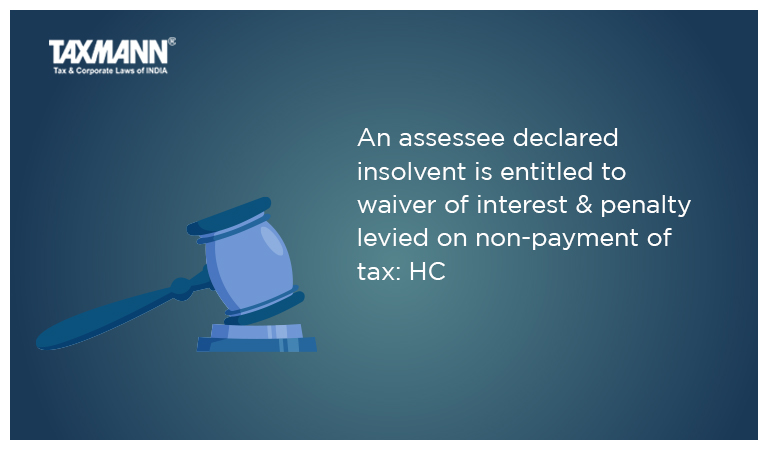An assessee declared insolvent is entitled to waiver of interest & penalty levied on non-payment of tax: HC
- Blog|News|Income Tax|
- 2 Min Read
- By Taxmann
- |
- Last Updated on 7 September, 2022
Case Details: Mrs. T.R. Bhuvaneswari v. Official Assignee High Court - [2022] 141 taxmann.com 486 (Madras)
Judiciary and Counsel Details
-
- Senthilkumar Ramamoorthy, J.
- T.R. Rajagopal, Sr. Counsel & Mrs P. Veena Suresh for the Applicant.
- N.V. Balaji, Mrs Uma, Official Assignee & Karthik Ranganathan, Standing Counsel for the Respondent.
Facts of the Case
Assessee was adjudged as insolvent and pursuant thereto, Official Assignee took charge of estate of assessee. Assessee categorically informed Official Assignee that income tax liability, including capital gains tax liability, was likely to accrue when assets comprising estate are sold. Assessee provided her PAN and requested the Official Assignee to remit tax.
Later, the Income-tax Department informed the Official Assignee that the income tax liability of the estate of the insolvent had not been discharged. Eventually, ex parte assessment orders were issued. Upon obtaining the permission of the Court, the Official Assignee remitted tax.
The Income-tax Department issued a demand notice claiming an interest under sections 234A, 234B, and 234C for delayed filing/remittance of tax returns/advance tax. The assessee filed an instant petition seeking a waiver of such interest.
High Court Held
The Madras High Court held that there was considerable merit in the contention of the ex-insolvent/applicant that she took all reasonable measures to discharge her tax liability.
Ordinarily, the assessee would be liable to pay interest and penalty for non-payment of advance tax. However, on account of the following reasons, the assessee was entitled to a waiver of interest and penalty as regards non-payment of advance tax.
a) The ex-insolvent/assessee was not in a position to remit income tax;
b) She took all possible measures to procure payment of tax; and
c) The debatable nature of and legitimate doubts regarding the tax liability of the estate of an insolvent.
List of Cases Referred to
-
- Tushin T. Mehta v. Chief CIT [2019] 108 taxmann.com 257/417 ITR 529 (Mad.) (para 12)
- CIT v. Insilco Ltd. [2010] 190 Taxman 306/321 ITR 105 (Delhi) (para 12)
- CIT v. Bhagat Construction Co. (P.) Ltd. [2015] 60 taxmann.com 334/235 Taxman 135/[2016] 383 ITR 9 (SC) (para 12)
- Kakadia Builders (P.) Ltd. v. ITO [2019] 103 taxmann.com 53/262 Taxman 268/412 ITR 128 (SC) (para 12).
Disclaimer: The content/information published on the website is only for general information of the user and shall not be construed as legal advice. While the Taxmann has exercised reasonable efforts to ensure the veracity of information/content published, Taxmann shall be under no liability in any manner whatsoever for incorrect information, if any.

Taxmann Publications has a dedicated in-house Research & Editorial Team. This team consists of a team of Chartered Accountants, Company Secretaries, and Lawyers. This team works under the guidance and supervision of editor-in-chief Mr Rakesh Bhargava.
The Research and Editorial Team is responsible for developing reliable and accurate content for the readers. The team follows the six-sigma approach to achieve the benchmark of zero error in its publications and research platforms. The team ensures that the following publication guidelines are thoroughly followed while developing the content:
- The statutory material is obtained only from the authorized and reliable sources
- All the latest developments in the judicial and legislative fields are covered
- Prepare the analytical write-ups on current, controversial, and important issues to help the readers to understand the concept and its implications
- Every content published by Taxmann is complete, accurate and lucid
- All evidence-based statements are supported with proper reference to Section, Circular No., Notification No. or citations
- The golden rules of grammar, style and consistency are thoroughly followed
- Font and size that’s easy to read and remain consistent across all imprint and digital publications are applied






 CA | CS | CMA
CA | CS | CMA


